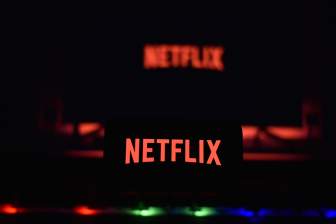When Blue Jays rights-holder Sportsnet decided to simulcast TV broadcasts on its radio network this year, it left Toronto as the only big-league team without a dedicated radio broadcast crew.

The network’s commentators had to pivot from a television-only style to one that would be inviting for radio listeners as well. Rob Corte, vice-president of Sportsnet and NHL Productions, is pleased with the early results.
“So far, so good,” Corte said in a recent interview. “We’ve had a few discussions about how we can make it a little bit more ‘radio’ at times without compromising the television product. But it is a fluid process and we’re constantly tweaking it and looking for ways to get better as the season goes on.
“We’re not quite there yet but I’m happy with the progress. But as I said, there’s still a little bit of a way to go before we find the sweet spot where we’re completely happy.”
In a late-February news release, Sportsnet said the decision to streamline production was made to minimize travel and closely adhere to team, league, and government protocols related to the pandemic.
It meant that broadcasters Buck Martinez, Dan Shulman and Pat Tabler would be heard on both television and radio for the 2021 season.
Radio commentator Ben Wagner remained with the broadcast team. He has provided live hits from the Blue Jays’ temporary home of TD Ballpark in Dunedin, Fla., and contributes to Sportsnet’s television and radio station interview segments.
The changes raised the eyebrows of some radio traditionalists, who wondered how their listening experience may be altered.
“Radio and baseball is kind of a magical thing, I think a lot of people think that,” said Paul Cross, professor and co-ordinator for the radio and media production program at Toronto’s Humber College.
“It’s something that people of all generations right now can still relate to because baseball has been on the radio almost since there was radio. It’s really evocative of summertime. It’s a summertime sound.”

Get daily National news
On its radio broadcasts, Sportsnet has incorporated natural audio from the ballpark with its broadcasters’ calls. Sound effects and music from the television broadcast are not included on radio.
An in-game radio host runs down the lineup before each game and goes over any injury updates or news before throwing to the broadcast crew, who have called games from a variety of locations this season due to pandemic restrictions.
One of the main challenges for the commentators is not leaving the radio listenership in the dark. Television viewers can see images that radio listeners cannot.
“Radio requires description and special attention that a TV broadcast doesn’t necessarily require,” Cross said in a recent interview. “The TV feed of audio from the TV broadcast is not going to do the same job for someone listening,” he added.
In a pre-season interview with The Canadian Press, Shulman acknowledged the change would require a broadcast style adjustment in an effort to keep the radio audience as informed as possible.
Sportsnet declined requests to make Martinez and Tabler available for interviews. The network said the earliest they might talk on the subject would be mid-season.
After multiple listens over the first few weeks of the campaign, radio listeners essentially get a serviceable broadcast as commentators do their best to provide as much colour and detail as possible.
But there are subtle differences between the two mediums that become all the more glaring in a simulcast situation.
Martinez opened a recent game against the Atlanta Braves by saying, “Thanks for watching, folks. It’s going to be a great night.” Of course, radio listeners aren’t watching anything.
In a late April game against Washington, Martinez made three references to being able to “see” what was happening.
A mention of an umpire’s modified helmet was prefaced with, “As you can see.”
There was a comment on Bo Bichette’s effort: “And you can see Bichette put a good swing on (Max) Scherzer’s offering.”
And after Vladimir Guerrero, Jr., hit a grand slam, Martinez said, “You could see the reaction on the bench.”
Television viewers can watch the screen to see what he means. Radio listeners had to fill in the blanks.
The simulcast can require an adjustment from the leisurely, friendly-to-the-ear flow of radio broadcasts.
“It has a place in history and it has a place in our memories and our hearts,” Cross said of Blue Jays radio tradition.
“It’s a thing we don’t like to lose. It was done very specially for us to hear.”
Wagner, meanwhile, was left in an unusual spot when the network made changes. Recently reached in Dunedin, he had a “wide range of emotion” when told of the radio developments for the 2021 campaign.
“A lot of momentum from this past off-season led to a lot of disappointment,” Wagner said. “I love the craft of radio. I love the nuances of baseball on radio, let alone just live sporting events on radio.”
“It was hard not to take it personally, but with that then came opportunity,” he added. “(Like) the fact that I’m involved with the No. 1 product on how Blue Jays baseball is consumed by its fanbase. I’ve been given way more opportunity and greater opportunity to show my skillset and do new things at the same time in this company.”
Sportsnet has yet to determine whether a simulcast will be used again in 2022 or if traditional radio broadcasts will return.
The Blue Jays will return to Sahlen Field in Buffalo, N.Y., on June 1. The team hopes to return to Toronto’s Rogers Centre at some point this year.
This report by The Canadian Press was first published May 14, 2021.
Follow @GregoryStrongCP on Twitter.















Comments